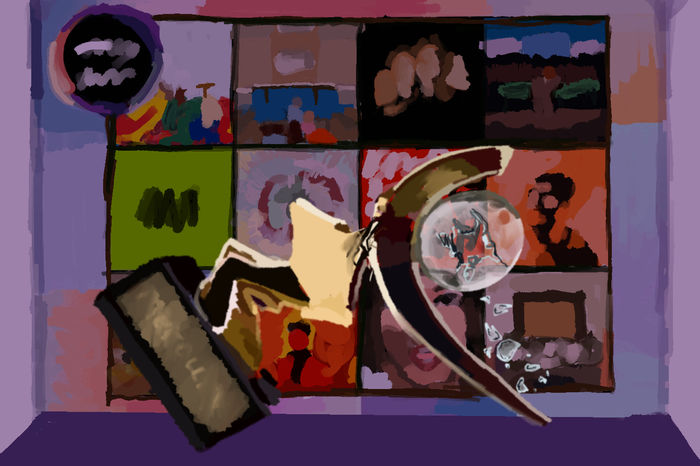Exploring Notting Hill Carnival’s sound systems
Sharleen Opia explores the past and present of Notting Hill Carnival’s sound systems

Notting Hill Carnival is the biggest carnival in Europe and globally only second to Rio Carnival in Brazil, attended by millions to celebrate Caribbean culture on the streets of West London. The event not only contributes to the nation’s cultural enrichment, but it was recently revealed that the event generates £396 million for London’s economy, attracting both international and national tourists. It came to be as a means of constructing community, unity, and cultural pride after high-tension race riots in Notting Hill.
“The recent violent racist riots brought Carnival and its roots in protest even further to the forefront this year”
In 1959, Kelso Cochrane was killed in a racist attack on Southam Street in Notting Hill, and a strong sense of grief and injustice overcame the local community. Soon, activists began to organise community events such as the first ‘Caribbean Carnival’ at St Pancras Hall, organised by Trinidadian activist Claudia Jones in 1959. Later, in 1966, Rhaune Laslett organised a children’s street fayre to unite the West Indian, African, and Irish communities in the area, strongly involving the Caribbean community and their music in the festivities, thus forming the first Notting Hill Carnival in history.
The fact that, just recently, ethnic minorities across the UK have been fearing for their safety due to violent racist riots brought Carnival and its roots in protest even further to the forefront this year. At Carnival, people bring flags and traditional attire from a myriad of cultures and countries to celebrate in the streets, bonded by the intertwined rhythms of music and the beauty of the cultural contributions of the UK Caribbean community.

My personal favourite thing to do at Carnival is to explore the different sound systems stationed around. These are a vital part of Jamaican and Trinidadian music culture and have undeniably changed the course of the music industry; they are enormous speakers that amplify blared basslines and push percussion to the forefront, turning listening to music into a full-body experience. During Carnival, you can explore the different sound systems and the genres they have on offer, with diverse music ranging from reggae, bashment, and salsa to house, dubstep, and techno.
We arrived at Shepherd’s Bush station and walked towards Notting Hill, with the first sound system we encountered being Gladdy Wax.

Gladdy Wax
“Carnival is a space of pride and connection, especially for racialised communities”
When we arrived at the Gladdy Wax sound system on Portobello Road, Gladdy was MCing, and he and the DJ brought the vibes in front of their copious stacks of vinyl records. We danced to lush reggae classics with Gladdy bringing all the dynamic passion on the mic. It was amazing to see the historic relationship between vinyl and sound systems honoured by this Carnival legend; Gladdy opened for Bob Marley in 1973 and ran one of North London’s most important record shops for 14 years. We then headed down to the massive Piano People stage.

Piano People
Globally known for being one of the most important Amapiano and African dance music stages at numerous festivals and events, Piano People came through with bashment, afrobeats, amapiano, and so much more. Smiles decorated the crowd as the DJs blended African and Caribbean songs through seamless mixing and surprising remixes, constructing musical allegories for the myriad of sounds that make up Black British music. As well as platforming some live singers, the stage had a social atmosphere dripped in joy. On the second day of Carnival, we finally got to see King Tubby’s sound system.

King Tubby’s
One of the most important sound engineers in Jamaican history and a major influence in Dub music, King Tubby lives on through his sound system. He has been credited with inventing the remix; he transformed sound engineering from a purely technical endeavour to a more artistic one, pioneering creative mixing. At the King Tubby sound system, we listened to modern and old-school bashment, and later some head-bopping Dub classics. The MCs, as always, contributed to the magic of the ambience, teaching us dance moves and adding hilarious ad-libs to the tracks’ melodies. The crowds can be overwhelming, especially on the Monday, so we were not able to see all the stages we wanted to over the two-day period, but we definitely had the chance to enjoy the sound systems we did visit.
Carnival, as always, was an amazing time for music lovers to come together and, especially for racialised communities, it is a space of pride and connection. Carnival this year was as colourful, bright, and eclectic as ever and, of course, the food, vibes, and people are what made it so special.
 News / Clare Hall spent over £500k opposing busway 24 December 2025
News / Clare Hall spent over £500k opposing busway 24 December 2025 Comment / The ‘class’ of Cambridge24 December 2025
Comment / The ‘class’ of Cambridge24 December 2025 News / Eight Cambridge researchers awarded €17m in ERC research grants27 December 2025
News / Eight Cambridge researchers awarded €17m in ERC research grants27 December 2025 News / Caius mourns its tree-mendous loss23 December 2025
News / Caius mourns its tree-mendous loss23 December 2025 Comment / League tables do more harm than good26 December 2025
Comment / League tables do more harm than good26 December 2025









